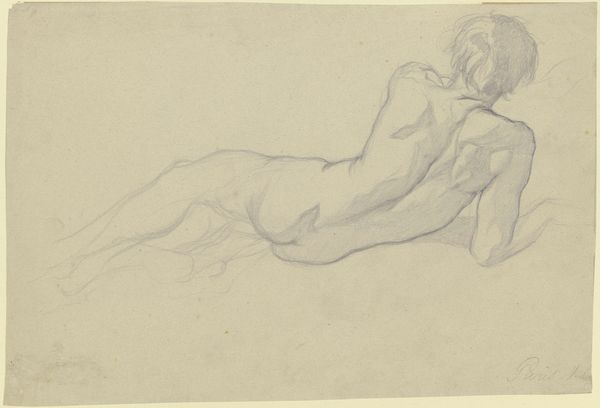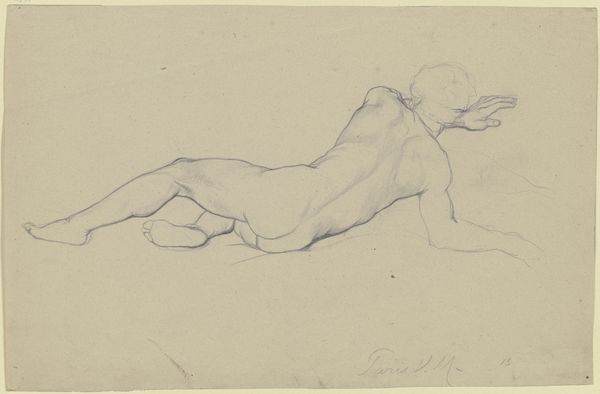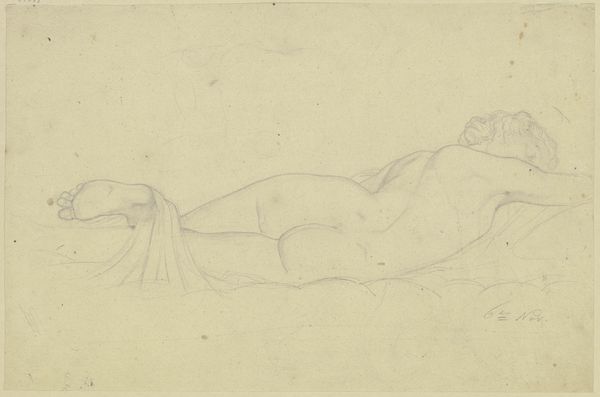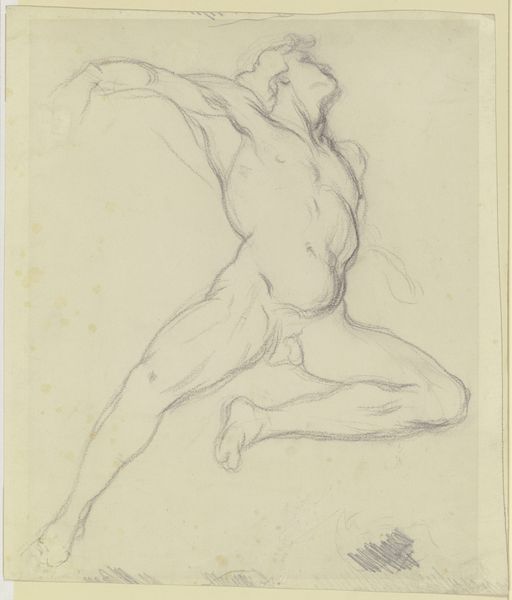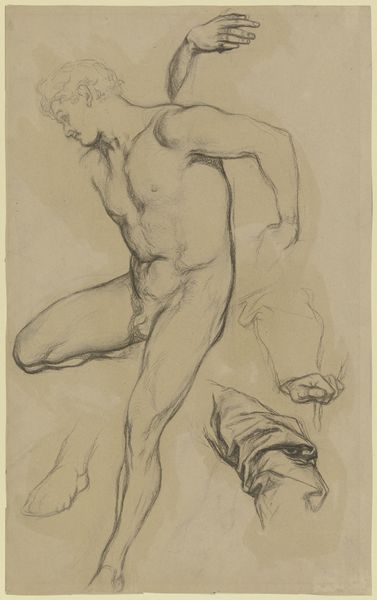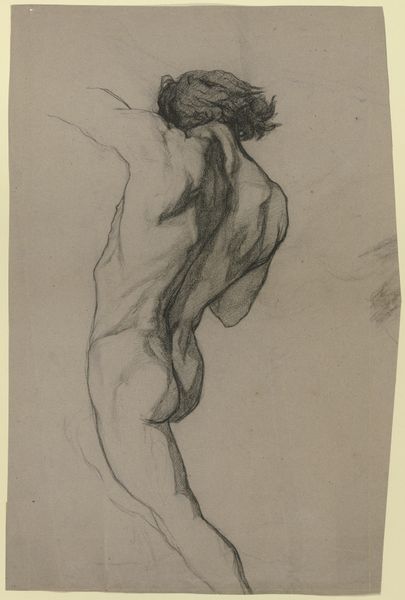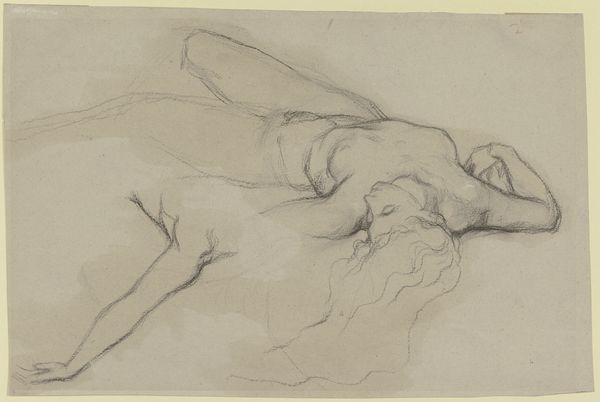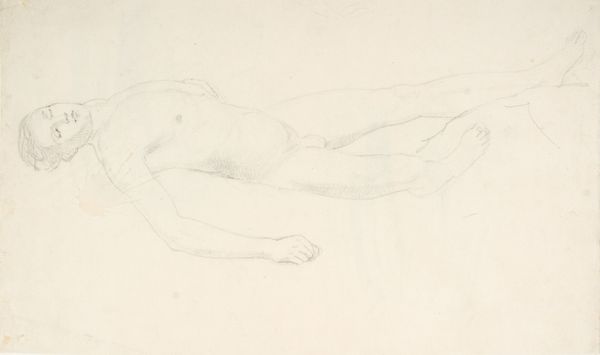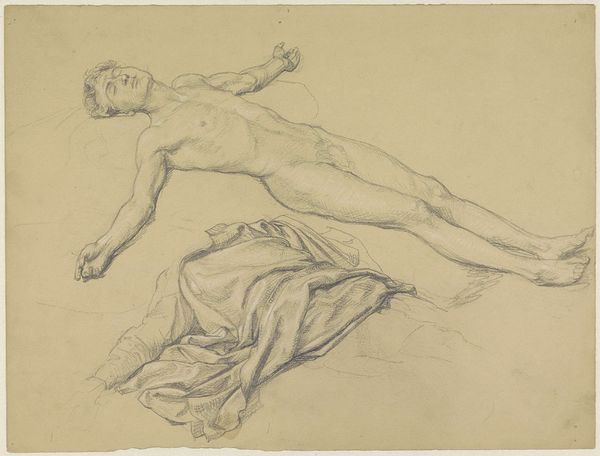
drawing, paper, pencil, chalk
#
portrait
#
pencil drawn
#
drawing
#
16_19th-century
#
pencil sketch
#
charcoal drawing
#
figuration
#
paper
#
pencil drawing
#
pencil
#
chalk
#
academic-art
#
nude
Copyright: Public Domain
Curator: We’re looking at a drawing by Victor Müller, entitled “Hingestreckt sitzender männlicher Akt.” Currently held in the Städel Museum's collection, it presents a reclining male nude. Editor: Immediately, I see this sketch and it feels so intimate. Like I've stumbled into the artist's private studio and caught him at work. There’s a real sense of observation. Curator: Absolutely. What I find compelling is how Müller’s work, especially his figurative drawings, intersects with the academic traditions of the 19th century. This piece offers a study in classical form and musculature, yet its existence as a drawing invites questions about process and intention. In the history of nude art, what does this kind of image suggest to a modern audience? Editor: I like how raw it feels, y'know? Not overly polished, not trying to be the end-all, be-all statement on the male form. It feels more like Muller is working something out, finding the shapes and shadows as he goes. The detached arm at the top, what is that all about? Curator: It's true that the artist employs pencil and chalk on paper to create the work, and its strength resides in that very quality of being a study rather than a fully realised painting. In a time where ideas about masculinity were shifting drastically, the male nude itself had become a site of tension, laden with different meanings. Victor Muller may have tried to steer clear from a defined canon. Editor: True. Still, I think there's also an undeniable vulnerability in displaying the unclothed body this way. The way he's posed, almost languid, it subverts those old ideals. Is it radical? No, probably not. But it whispers of a shift. Curator: It certainly participates in that discourse. Thinking about academic art from this period allows us to think about both continuities and discontinuities of traditions that might at first seem monolithic. Editor: Agreed! And for me, beyond all the history, it’s still just a really beautiful drawing. Captures a moment, a mood, a feeling… Curator: Beautiful, yes. With all its context, Müller’s image stays open to further interpretations, encouraging us to reflect on bodies, art and representation itself. Editor: Yeah. Art, bodies, life – it's all connected, right? I guess that's what keeps me coming back for another look.
Comments
No comments
Be the first to comment and join the conversation on the ultimate creative platform.
